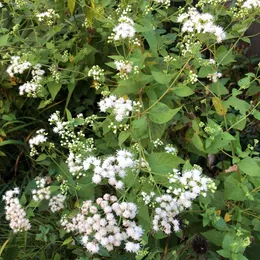

Top 20 Most Common Weeds in Illinois
Amidst Illinois' varying climatic conditions, from frigid winters to humid summers, and its fertile soil, garden weeds such as Pokeweed, Common milkweed, and Poison ivy thrive vehemently. These pervasive species pose perennial challenges to gardeners and landscapers, entrenching themselves across the diverse Illinoisan landscapes, evading efforts to control their spread and demanding consistent management.

























North America > United States > Illinois
More Plants in Illinois

Most Common Toxic Plants

Most Common Flowers

Most Common Flowers of Spring

Most Common Spring Fruits

Most Common Fruits

Most Common Trees

Most Common Tall Trees

Most Common Flowers of Winter

Most Common Plants
In Illinois, you can find Pokeweed, Common milkweed, Mulberry, Common buckthorn, Bittersweet, and more! There are 50 types of plants in total. Be sure to look out for these common plants when you’re walking on the streets, in parks, or public gardens.